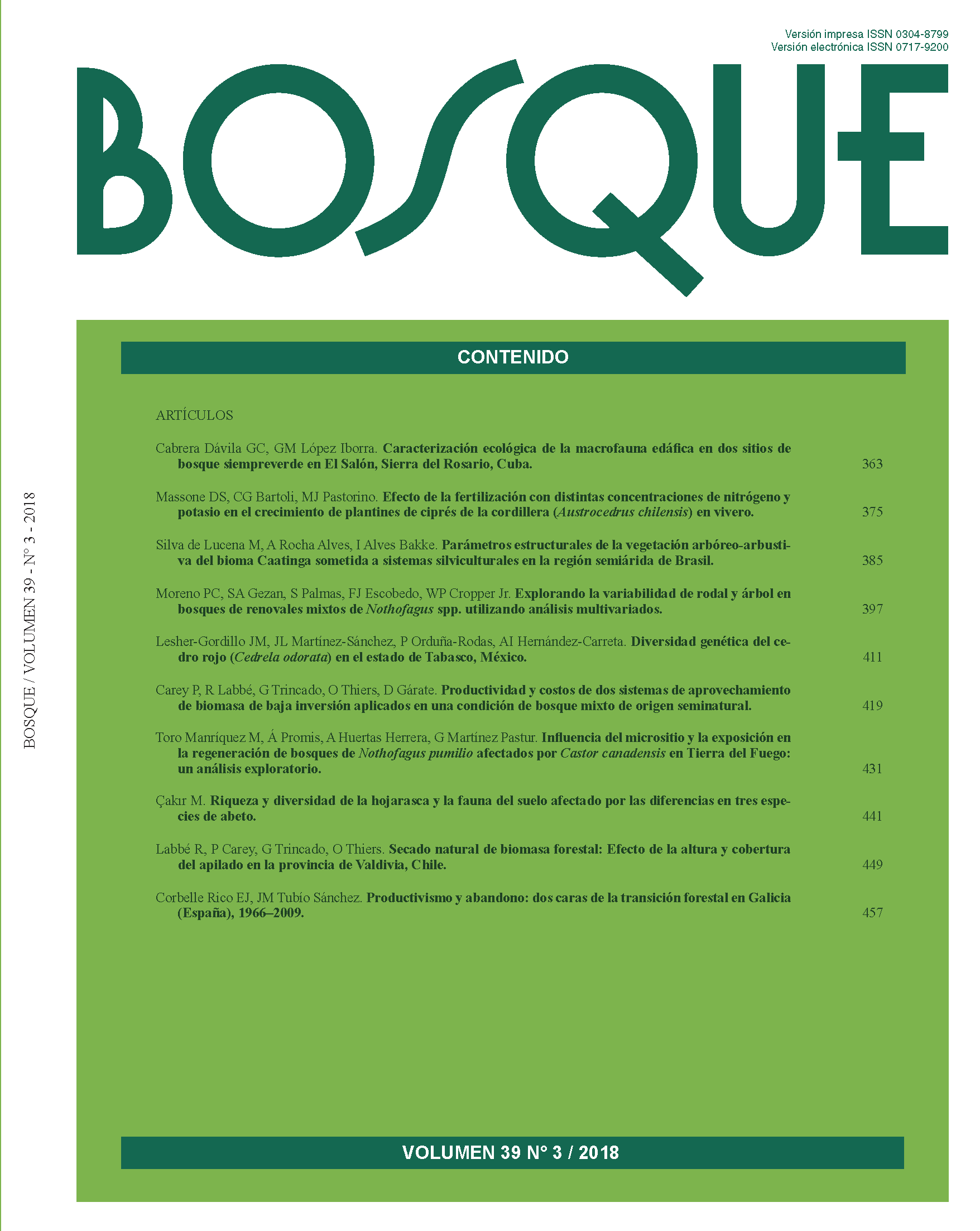Main Article Content
Dec 11, 2018
Abstract
The expansion of wooded area is a common trait of most industrialized countries, and in every one of them it implies a trend reversal from the deforestation of previous centuries. The concept of “forest transition” was proposed in the last years of the twentieth century as a suitable designation for this process, for which several different explanations, or transition paths, were developed. Each transition path would likely result in a different species composition of the newly formed forest stands, and it is possible that several different paths could simultaneously operate in the same geographic area. In this work we present the case of Galicia, a Spanish region that has recently become the biggest producer of wood in the country, representing about one half of total production. We explore the trends followed by wooded areas using the four available editions of the Forest Map of Spain, from 1966 to 2009. Results allow identifying three different areas within the region according to the most common species in the newly formed forests. This division reveals the existence of a process of spatial specialization that concentrated the production of wood for the processing industry in a relatively small part of the whole territory, while leaving the rest of the region mostly void of active management. Results suggest that at least three different paths of forest transition (scarcity path, economic development path and State policy path) have been active in the
region in the last fifty years, though not always in the same areas, neither with equal intensity along time.


